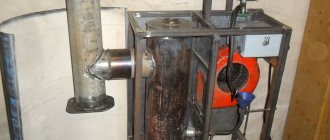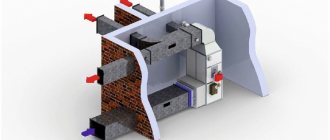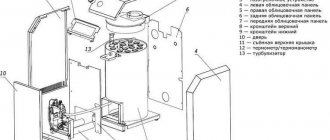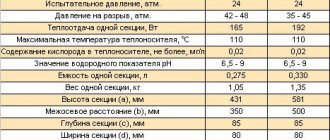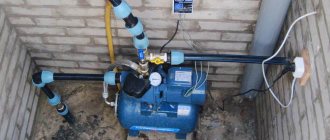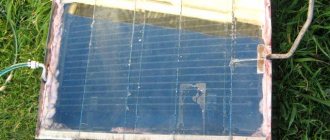The oil heater can be flat or finned, like a battery.
The oil heater, thanks to its reliable design and low cost, is today the most common additional source of heat in residential premises and administrative buildings. This device is characterized by high efficiency and increased safety during operation, compared to other electric heating devices. However, as with any other equipment, breakdowns are possible with oil heaters. And today, ordinary people are increasingly interested in the question of how to repair equipment or what kind of oil is poured into an oil heater.
Experts do not recommend carrying out repairs on their own for those who do not have the appropriate education and experience. If the device breaks down, it must be taken to a service center. However, not everyone has this opportunity and oil heaters for apartments have to be repaired with their own hands. In such cases, you need to study the device design and correctly determine the cause of the malfunction.
Typical problems with oil radiators
The most common problems with oil heating elements that people try to solve on their own include damage to the housing, changing the oil in the oil heater, and breakdown of the heating element.
Damage to the integrity of the heater housing. This is the result of corrosion or mechanical damage to the housing during transportation, falling or misuse. A characteristic sign of a breakdown is oil leakage.
All equipment repair work, including soldering of the case, must be carried out by a professional at the service center.
The progress of repair work is similar to the procedure for repairing batteries and heating radiators. The coolant is completely removed. In this case, you need to pay attention to what kind of oil was in the oil heater, since at the end of the work you will need to refuel the device. You can refer to the documentation that accompanied the purchase, namely the technical data sheet. It clearly indicates which oil to pour into the heater and its chemical composition.
If a gap appears, it needs to be soldered.
Next, the inside of the tank is washed with alcohol. This will help remove the greasy film from its surface. The junction area is cleaned of corrosion and enamel residues using sandpaper and treated with alcohol. After the alcohol has completely evaporated from the metal surface, proceed directly to soldering. Soldering is carried out using brass or silver solder. The work is carried out using a torch. The substance is applied to the breakdown site and heated with a burner. As soon as the seam has cooled, the coolant is poured back into the body cavity.
Next, the question arises of what kind of oil is poured into the oil heater. Organic oil cannot be used here, since it does not form a single system with the mineral substance, which will shorten the service life of the equipment. Also, you cannot mix two substances with different physical characteristics (coefficient of thermal expansion and boiling point). The new coolant in terms of chemical composition and technical characteristics should be as close as possible to the previously drained substance.
Whistling, uncharacteristic sounds when the heater is operating. This indicates insufficient oil level in the system. It could have leaked through a hole in the tank. To do this, the body is carefully inspected from all sides for damage. Strange sounds may occur if the heater has been left in a horizontal position for a long time.
In this situation, you don’t need to think about how to add oil to the heater. The problem is this: mineral oil has mixed with air. Returning the device to a vertical position, the oil begins to flow down the housing, which is the cause of strange sounds and gurgling. They will disappear after some time. This video will help with repairing an oil heater:
The design of a simple oil heater
It is good to cover an oil heater with clothes to dry. The only type of device where the owner will avoid fatal consequences. The only thing is that on the side of the accordion container there is an extension equipped with electronic filling; avoid covering the compartment. The oil heater device includes the following elements:
Emergency shutdown sensor (thermal fuse, relay)
- A container filled with oil. Appearance - like an accordion, heating up to a decent temperature; wait a moment to touch it with your hand. When it comes to drying items, don't be afraid to place heat-resistant items. The container is sealed, but there is 15% air inside. Try placing the oil heater upside down, tilt it on its side, and return the load to the wheels. Hearing dull blows frighten mice: air bubbles burst inside. Water is not used by the heater, it will quickly evaporate, corrosion of the housing will become significant, the manufacturing technology would require the complete exclusion of air from the working fluid (water + oxygen = the most powerful oxidizer of living nature). The coefficient of thermal expansion of the most common liquid on the planet is ten times higher than that of steel. It's not good if the tank ruptures.
- The lower part of the end of the accordion contains a heating element, to which the electronics compartment clings. The oil heater does not have a pump and works by natural oil recirculation. The current starts from the heating element upward, then at the opposite end of the battery the liquid descends. While working, it emits audible spiral vibrations under the influence of alternating voltage. The effect is irreversible and is caused by the influence of the Earth's magnetic field. The boiling point is above 100 ºС (150-200), avoid touching the container, the liquid is not brought to a change in phase state due to the prohibition of using water: the container will burst. A double heating element (two spirals) will allow you to more flexibly regulate heating.
- There is a thermal fuse located not far from the heating element. The device will prevent a fire from happening if the oil suddenly leaks out and the temperature relay breaks. An oil heater would work hard when the copper heating element began to melt. The oil will leak out - the high temperature through the housing will cause the stuck thermal fuse to trip. The structure is divided into bimetallic (reusable) or wire (disposable). The photo shows the presence of a clearly blackened tablet above the heating element: a thermal fuse (see the first photo of the review), or a thermal relay (determined by the design).
Steel profile providing connection between the electronics compartment and the heater accordion
- The relay is located at the top. The main difference from the iron is visible: there is no contact with the body. Apparently, the thermal relay is simply trampling the air. An oil heater is reminiscent of an electric kettle, in which a bimetallic plate is often exposed to steam penetrating through a special hole in the housing. Thermal relay is an adjustment mechanism; the thermal fuse is designed to localize the event of failure of standard equipment.
- The pictures show: there are two switches, each has a phase, the ground of the heating element, and one wire of the thermal relay. This redundancy allows the indicator lights to glow. One phase is not enough to ensure the Joule-Lenz effect. The manufacturer does not know in advance which side the user will plug in, whether the blue (red) wire will be neutralized or exposed to 230 volts.
The electrical part differs little from an iron, electric kettle, or water heater. You can turn on both heating element coils simultaneously, separately. In the latter case, the oil heater will take longer to reach the operating mode. There is a chance that in a cold room the design will work without interruption.
A researcher of the Earth's magnetic field listens to the whirring of an oil heater coil.
Close the air passage holes into the electronic circuit - nothing will burn, the oil heater will turn off prematurely, restarting will not happen soon, the flow of fresh air will be prevented by a drying woolen sock. The bottom of the electronic unit casing is cut with inlet slits. The air leaves the floor, bypassing the wires, reaching the upper outlet. Along the way, the bimetallic plate estimates the moment the heating stops.
Aspects of choosing a heating device
How to choose the right oil heaters for your cottage and home? In this case, pay attention to the power of the device, its size, the presence of additional characteristics (climate control system, fan, humidifier, clothes dryer).
The heater heats the room due to air convection.
Power or performance. According to building codes, heating a room with an area of 10 square meters requires 1 kW of thermal energy. At the same time, the house or apartment is insulated, and the temperature outside is as low as possible. Therefore, for a room of 15 sq.m. you need a radiator with a power of 1.5 kW. However, you need to remember that the equipment cannot operate for a long time at the maximum possible power, since the electrical part may fail. Experts recommend choosing a heater “with a reserve” in terms of performance, that is, for a room with an area of 15 sq. m. - 17 sq. m., it is better to buy a device with a capacity of 2 kW.
Section thickness. In this case we are talking about the efficiency of the equipment. Radiators with thin sections heat up quickly and are characterized by economical energy consumption. But here their heat capacity decreases, that is, the device will not be able to warm up a large room. A heater with thick sections, on the contrary, will have high performance, but at the same time it consumes a large amount of electricity. Which oil heater is best for an apartment? This is a device with an average thickness of sections, where a reasonable balance is maintained between their power, energy consumption and performance.
Device weight. Depending on the number of sections, the weight of the heating element can vary between 18-25 kg. If the purchase weight is less than the specified values, this should alert you. In this case, the buyer has a defective product. And here you don’t need to think about what kind of oil is poured into the heater and how to do it, but simply refuse to buy, even if the price is very attractive.
Any electrical product must be purchased from a specialized store and checked for a quality certificate. Otherwise, you may buy a defective product.
Additional functions. This is a control panel, a fan, a humidifier, and a clothes dryer. They will not only simplify the operation of the equipment, but also increase its performance and functionality.
Are you choosing oil heaters for your home? Consumer reviews will help create a correct picture of the product on the modern heating appliance market, and therefore you need to familiarize yourself not only with the range of products in stores and listen to expert advice there, but also read people’s opinions on thematic forums.
Where can you buy an electric double-circuit boiler for heating your home and is it really possible?
You can learn everything about an energy-saving electric heating boiler from this article.
Common reasons for repairs
During heating, the pressure in the tank increases significantly, which, due to frequent use, can contribute to depressurization of the device’s capacity. This phenomenon threatens partial loss of oil, as well as complete failure of the electric heater.
In addition to its own cumulative effect on the walls of the device’s container, high humidity in the room where the device is used has a negative impact.
Failure to follow the manufacturer's recommendations regarding the prohibition of drying clothes directly on the device can also lead to corrosion and further damage to the integrity of the tank.
Buying a quality oil cooler
An oil heater is used as an additional heat source in residential areas. Thanks to its mobility and light weight, it is easy to transport, and therefore this equipment is very often purchased for a summer house or country house. When choosing an oil heater, pay attention to its power, the thickness of the sections, weight and the availability of additional functions. An attribute of a quality device is the presence of a thermostat and various controllers that protect the radiator from overheating and operating in the wrong position.
Like any device, a radiator can break. Consumers often have questions about how to repair the heating element, how to change the oil in the heater, or how to solder the housing. In this case, you cannot repair the device yourself. It is better to contact the service center for help. This guarantees high quality repair work and, consequently, a long service life of the heater.
Major breakdowns of oil heaters
More often the heating element breaks down and the tank leaks. The oil heater becomes completely unusable. The relay will last for years. Today, Soviet irons are common and are still functional. The mechanism cannot be repaired. You need to clean oxidized contacts with alcohol. Repair of electronic components is limited primarily to replacing elements. Thermal fuses are too lazy to repair: it is difficult to calculate the response temperature. Masters avoid taking responsibility. Keys and relays should be cleaned from time to time.
Heater design
First we need to figure out what we have to deal with. An oil heater consists of several elements:
- frame. It is a sealed metal product. It is usually coated with a special powder paint, which prevents the material from deteriorating due to exposure to high temperatures;
- tubular electric heater. Located at the bottom of the body. During normal operation, it is completely covered with oil. By heating this filler from below, the heating element stimulates the onset of convection currents inside the equipment. As a result, the device heats up evenly and transfers heat equally evenly to the room;
- control system. It consists of a switch, as well as a power mode switch. The latter is not available on all models, but its presence significantly increases the level of people’s comfort, since it allows the air temperature to be adjusted depending on current needs;
- safety system. It includes an overheat sensor and a tip-over sensor. The first monitors the oil temperature. If it starts to boil, this is fraught with several negative consequences at once. Firstly, equipment burnout may occur. Secondly, boiling oil releases a lot of air, which begins to “expand” the body from the inside, which can lead to deformation and cracking of the latter. If a crack forms, the oil will leak out, and this is a fire hazard. But a sensor triggered by overheating will not allow all of the above, since it will automatically turn off the device. As for the rollover sensor, it also performs a very important function. As mentioned above, for the equipment to operate correctly, the tubular electric heater must be completely immersed in oil. If the device falls, the filler flows to the side and the heating element runs “dry”. This leads to its rapid overheating and burnout. If the heater falls, the tip-over sensor immediately turns off the power supply, thereby saving the equipment from damage.
This set of elements is typical for any oil radiator. But there are some points that distinguish specific models from each other. In general, all oil heaters are divided into two large categories. In one of them, the body is a ribbed accordion, and in the other it is flat. The procedure for repairing the heater and filling it with oil depends on the type of radiator.
